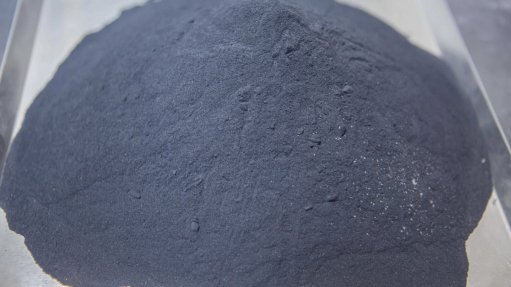
PRODUCT POTENTIAL The planar magnetic separator can achieve high-grade magnetite, assuming liberation size has been achieved
To deliver enhanced iron content in high-grade magnetite production, processing company Innovative Mineral Processing Technologies (Imptec) has developed the Cyclomag planar magnetic separator, which can produce up to 71% iron-grade products, or 66% iron, in one pass.
The separator uses rare-earth magnets to pull the magnetic material out of an airflow, while the tailings are separated and collected at the other end of the machine.
“The waterless separator achieves this grade of magnetite, assuming liberation size has been achieved. Generally, an increase in recovery of more than 10% can be expected,” says Imptec director and mining technology developer Chris Kelsey, who is widely known as the inventor of the Kelsey centrifugal jig.
He explains that the planar magnetic separator comprises a semicircular planar separation chamber with a feed inlet, product outlet and waste outlet ports. The separation chamber is sandwiched between rotating discs with embedded permanent magnets. An internal partition separates the inlet and outlet ports.
The operation involves rotating magnets, which are embedded in sectors and alternate with blank disengagement sectors. The feed enters the separator in a primary air stream, with magnetics accumulating on the inside surfaces of the separation chamber. The accumulated magnetics are drawn around a semicircular path to meet the internal partition. In this step, the magnetics disengage and discharge the product.
The primary air stream carries the nonmagnetic product to the outlet port, where the product is then transported to a waste pile through a secondary air stream.
As the magnetite production requires no water, there’s no need for tailings dams.
While the demonstration system can process up to 170 kg/h of magnetite, Kelsey notes that Imptec is engineering the required scale-ups necessary for commercial production.
Through the professional efforts of the South Australia-based Mining and Petroleum Services Centre of Excellence, Imptec received a South Australian government grant, as well as a further grant, organised by the centre, from mining major BHP Billiton, which enables Imptec to progress the project to commercial trials.
The separator works in conjunction with the Imptec superfine crusher to provide cost-effective particle size reduction to a liberation size that can be achieved along with efficient magnetic separation. The superfine crusher can crush product to superfine liberation sizes of magnetite. It provides a wet or dry, media-free, single-step, low-cost route to fine and ultrafine products from hard mineral feeds.
Kelsey says it has become apparent that the issue of the electricity costs of ultrafine comminution increasing dramatically, while orebody grain sizes are becoming finer, needs to be addressed.
He stresses that the incentive for developing super-fine crushing was to arrest cost escalation by extending the boundaries of low-cost crushing technology into the ultrafine size range, thereby avoiding high costs, which are becoming a serious processing roadblock.
Kelsey further stresses that dry processing of lower-grade magnetic ores has the potential to offer the lowest risk and ensure the highest level of sustainability. The separator draws on the benefits of the crusher to liberate and separate magnetic iron ores during beneficiation, which results in a power reduction of 20% to 40%, he explains. Notably, water use is limited to dust suppression and slurry transport.
Once this mineral process is scaled up sufficiently, it will provide the opportunity to efficiently process large deposits of magnetite – which currently remain untouched because of a lack of water and the cost of processing – to premium grades, Kelsey enthuses.
Meanwhile, a miner in South Africa has expressed interest in using the separator in a test unit in Johannesburg for platinum regrinds.
“The simplicity of the process will [ultimately] make it the norm,” Kelsey concludes.